The History Of Project A119: The ultra-secret plan of the United States, How they intended to detonate a nuclear bomb on the Moon.
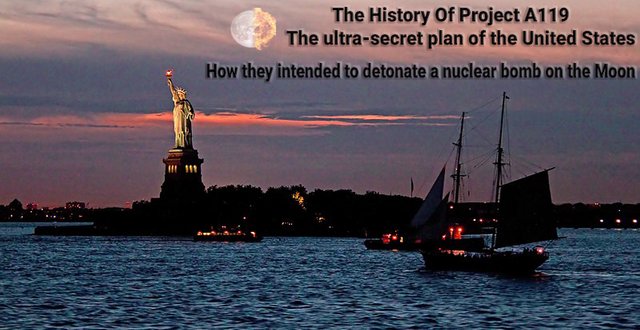
Many of us don't have believed that people did not actually go to the moon. The whole thing was an American drama, shot by film director Stanley Kubrick, whose main purpose was to win a moral victory against the Soviet Union.
But In reality, however, this is merely a conspiracy theory. There is so much evidence to go to the moon that no wise man raises this question anymore. But it not a conspiracy theory at all because the plan to go to the moon started much later. Long before the moon landed, the United States considered another shortcut mechanism to support the Soviet Union. They wanted to cause a nuclear explosion on the moon. The top-secret of the US Air Force was Project A119.
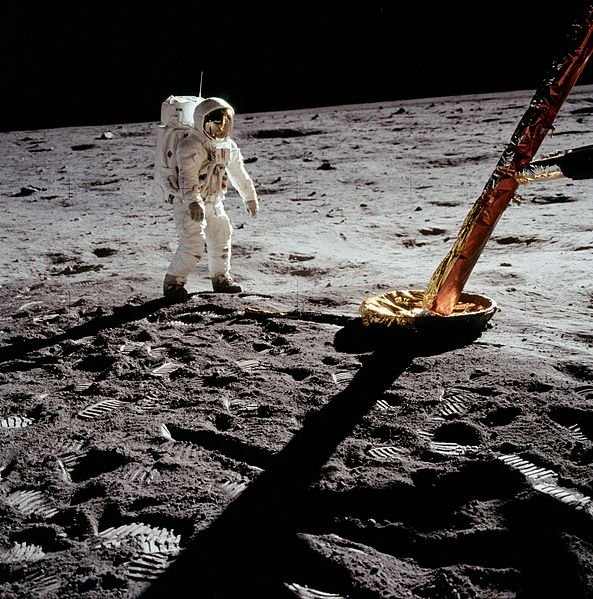
Aldrin near Module leg, image credit: commons.wikimedia.org, Author: Neil Armstrong_ Creative Commons Attribution 4.0
In the late Fifties, when the United States' nervous war with the Soviet Union subsided, the United States was far behind the Soviet Union in at least one case. That is the movement of Spacecraft. When the Soviet Union launched its Sputnik satellite to space for the first time on October 9, America was shocked by knowing this. Then, they decide that they have to do something big to prove that they are not far behind the Soviets.
Shortly thereafter when the reports began to be published in the media, on 7th November, the Soviet Union planning to launch a hydrogen bomb blast on the moon to celebrate the anniversary of the October Revolution. After hearing this news, on November 7, the Soviet Union sent its second satellite, Sputnik-2, to space. Americans routinely get frustrated. They will need some more time to send their satellite, but before that, they are desperate for something to happen. And what could be a simpler project to show the whole world without having to blast the moon?
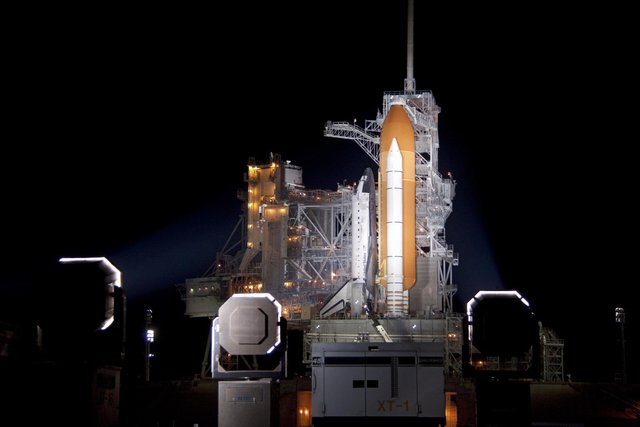
Sputnik Satellite, image credit: pxhere, CC0 Public Domain
It was debated from the very beginning about the impact of a nuclear explosion on space, how it would affect the Earth's environment. The Armour Research Foundation of the Illinois Institute of Technology in the United States has been researching the subject ever since. After the space war with the Soviet Union began, on May 8, the US Air Force assigned the organization to investigate what the impact of a nuclear bomb on the moon could have on the earth.
The project is named after Project A119. When the secret of the highly secretive project was leaked in 2000, its chief scientist admitted it was essentially an attempt by a public relations stunt in the United States. Its main purpose was to investigate the possibility of a massive explosion on the Moon that would be seen empty-eye from anywhere in the world, and which would lead to a positive perception of American military and scientific progress.
A ten-member team from the Armour Research Foundation began their research in secret. The topic of their study was to discuss how scientific, political, and military could benefit from the atomic explosion of the Moon and vice versa. The research team was led by a scientist named Leonard Reiffel, who was later appointed deputy director of the NASA Apollo program. Also included was NASA's renowned astronomer Gerard Kuiper, known as the father of modern planetary science.
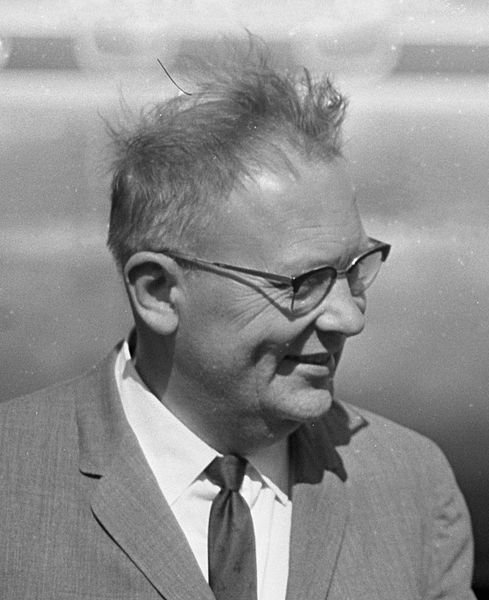
Gerard Kuiper, image credit: commons.wikimedia.org, Author: Gelderen, Hugo van/Anefo_ Creative Commons Attribution 4.0
One of the ten members of the study was a noted scientist, popular science writer, and media personality Carl Sagan. Even then, Carl Sagan did not become famous. He was a young scientist at that time. He was originally identified as a student of the astronomer Gerard Kuiper. In the project A119, it was his responsibility to calculate how far the clouds of dust would spread around the moon after the explosion.
According to the project's chief scientist Leonard Reiffel, the project was considering exploding on the dark surface of the moon. As a result, if the moon explodes, no one can see the change in the beauty of the moon from the earth. Their hope was that if a bomb with the same power as Hiroshima's bomb had exploded on the dark surface of the moon during World War II, the massive mushroom cloud that would have been created would have been caught in the eyes of the Earth by the light of the sun. Later, however, it was calculated that only 1.7 kilotons of bombs would be sufficient to see the explosion from Earth, where the Hiroshima bomb was 13-18 kilotons.
Reiffel and his team published the results of their study entitled 'A Study of Lunar Research Flights' . Reiffel claims they were concerned about the harmful side of it. He didn't explain exactly how the atomic bomb was planned to be sent to the Moon. But he claims that according to the technology of the time, it was not impossible. The Intercontinental Ballistic Missile could then have exploded within two miles of the moon at any location.
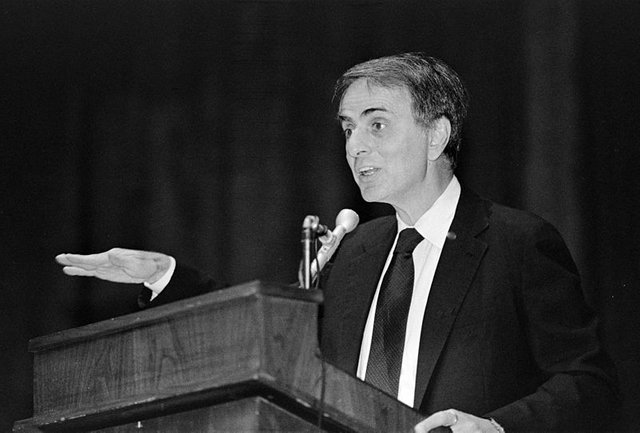
Astronomer Carl Sagan, image credit: commons.wikimedia.org, Author: Kenneth C. Zirkel_ Creative Commons Attribution 4.0
The discussion of Project A119 has been a secret for a long time. But in 1999, when he wrote Carl Sagan's Biography, biographer Keay Davidson learned about his existence. Carl Sagan died in 1996. After his death, when Keay Davidson start researching his biography, he discovered that Sagan was a Miller Fellow at the University of California, Berkeley and he mentioned his experience working on the project while applying for a highly respected graduate fellowship at the institute, although there was a clear ban on publishing any information about it at the time.
After the publication of Sagan's biography, Reiffel officially acknowledged the project in various media. Later, the US government also published some documents related to the project, including part of the study 'A Study of Lunar Research Flights'.
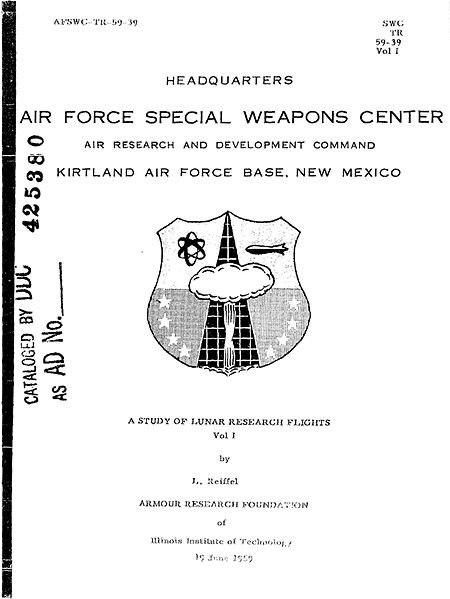
Study of Lunar Research Flights Cover Page, image credit: commons.wikimedia.org, Author: Armour Research Foundation_ Creative Commons Attribution 4.0
It's needless to say, the project has not been implemented in the end. In January 1959, the US Air Force canceled the project. Their main fear was that people would not accept the moon's explosion. In addition, according to Professor Reiffel, the possibility of nuclear waste being spread around the moon was also an important factor, which could have hampered future moon operations or plans to establish colonies on the moon.
When Neil Armstrong stepped on the moon, he said it was a small step for a human, but a huge leap for mankind. If Project A119 had been implemented in fact, he might not have had a chance to say so. instead we might say, it was a small explosion for America, but a huge loss for the world.
Image sources AND LICENCES:
Feature Image sources
All the images which I used in this post, they are free for commercial use and royalty-free. Original images links also provided under them.
If You Want To Further Reading About This Article Don't Forget To Checkout These REFERENCES:
- Inside Project A119, the secret US plan to detonate a nuclear bomb on the Moon
- US 'planned to blow up a nuclear bomb on the Moon'
- This Is The Story Of How America Once Thought About Nuking The Moon
- US military chiefs 'planned to blow up the moon with nuclear bomb' as show of Cold War muscle, physicist claims
- US planned one big nuclear blast for mankind
- Revealed: How the U.S. planned to blow up the MOON with a nuclear bomb to win Cold War bragging rights over Soviet Union
- America’s secret Cold War plan to nuke the Moon
- A Study of Lunar Research Flights
- Carl Sagan Biography
- Carl Sagan: A Life
- USA and USSR planned to nuke the moon out of existence
- U.S. Weighed A-Blast on Moon in 1950s
- Carl Sagan
Dear Stemians, Thanks and Wellcome again from me, to read my another article by wasting your valuable time. I think this article has helped you to provide you with important information about The History Of Project A119: The ultra-secret plan of the United States, How they intended to detonate a nuclear bomb on the Moon and your thoughts on about this article are extremely valuable to me. If you wish you can share your valuable thoughts or opinions by leaving a comment about this article. I think your opinions about this article will help me to be more interested in writing more article like this. So don't forget to leave your opinions about this article. If you like this article, then don't forget to upvote it. Also You can and resteem this article to help others know about The History Of Project A119: The ultra-secret plan of the United States, How they intended to detonate a nuclear bomb on the Moon.
Wish you have a great day. If you are more interested to read more article in my blog, then you can read my other article from the below-mentioned list:
- The Ancient History of Troy: How archaeologists found the lost city of Troy
- A Brief History Of First Human In Spaceflight
- Sir William Lawrence Bragg: The younger Nobel prize personality Who Beginnings of X-ray Crystallography in science
- Behind of The Abel Prize: The highest award in mathematics history
- Confirmation Bias: A tendency which influence your thought and decision in social life.
- The Battle of Wounded Knee Massacre of 1973: The Backstory Behind The Bloody Encounter Of 'Wounded Knee'
- Great Chicago Fire of 1871
- The Mystery Of New York City Draft Riots Of 1983
- The Weird Haunted History Of Abandoned Place
Congratulations @undead-writer! You have completed the following achievement on the Steem blockchain and have been rewarded with new badge(s) :
You can view your badges on your Steem Board and compare to others on the Steem Ranking
If you no longer want to receive notifications, reply to this comment with the word
STOPTo support your work, I also upvoted your post!
Do not miss the last post from @steemitboard:
Vote for @Steemitboard as a witness to get one more award and increased upvotes!